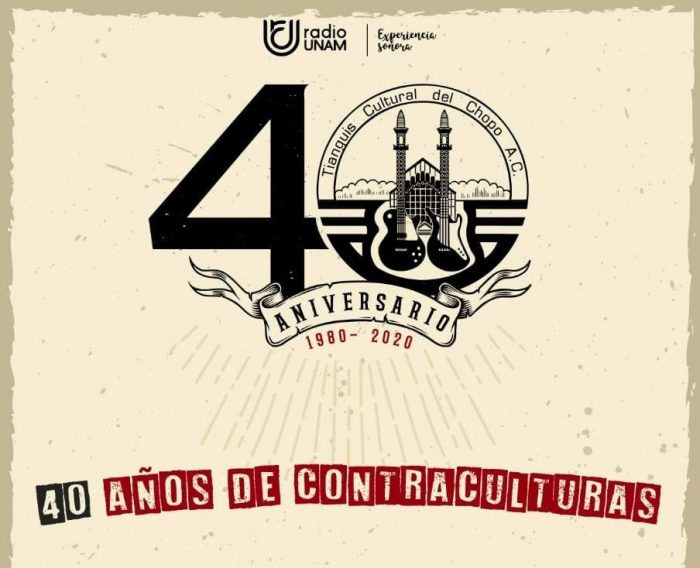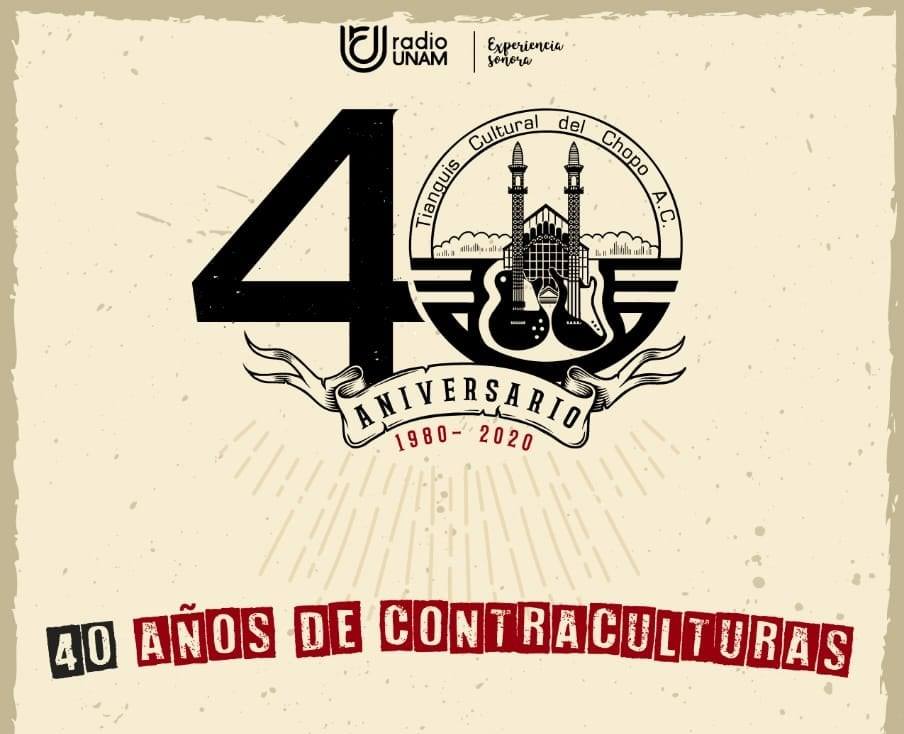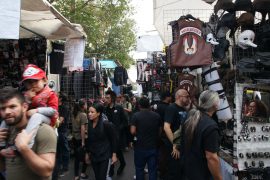Tianguis Cultural del Chopo: 40 years of Counterculture
16 November 2020It was Friday night and after endless planning, changes and ideas, the commemorative program “Tianguis Cultural del Chopo:. 40 years of Countercultures” was held through Radio UNAM, in the program Modulated Resistance and conducted by Hector Castañeda and Berenice Camacho. The session was attended by irreplaceable guests, poplar trees from the heart who bring with them experience and knowledge that came to light during the program.
The transmission, carried out on October 16, consisted of a series of conversations on the most representative themes of the essence of the tianguis, whose approach allowed for a pleasant contrast between what it means today and what it represented in its past years, from the perspective of generations distanced by time. A series of looks and space-time realities coincided in this special program. It should be noted that given the events provoked by the COVID-19, this event was carried out at a distance; in digital format.
The inaugural block of this meeting focused on building a historical, archaeological and collective recapitulation of all those key moments that led to what we know today as the Tianguis Cultural del Chopo. Voices from El Chopo such as Felipe Victoriano, Pepe Návar and Abraham Ríos crossed memories and stories with Leslie Medina, a young designer who expressed the link of her melomania with this space. The talk was greatly flavored by the journalistic knowledge that Javier Hernández Chelico delivered in a very punctual manner.
For the second topic, Enrique Falcón and César Salas, both members of the Tianguis Civil Association, participated. A dialogue arose regarding one of the main problems that El Chopo has faced in recent years: the consumption of music. Although the poplar is a foodstuff of melomania par excellence, it is also well known that the accelerated evolution of the digital era has turned the dynamics of bringing music to the ears. The buying and selling and exchange of records has undergone this change, however, the situation has given another type of symbolic value to these traditional practices. For half an hour, we reflected on these new meanings with criticism and a generational perspective in hand
In the third and last discussion, the topic of the punk cultural movement and the role it has played in El Chopo was developed. Punk activism is still alive in the streets that host the Tianguis, and Tobi and Ana Lilia, punks par excellence, talked about this, besides emphasizing the importance of literature, art and even gastronomy within the punk scene and the development of the individual in the Mexican counterculture.
It is worth mentioning that not everything was an exchange of words; you can’t pay homage to the Poplar without music. Musical standards appeared such as Francisco Barrios “el Mastuerzo”, ex-drummer of Botellita de Jerez; Manuel Suaréz, ex-vocalist of “Motor”; the punk group “Garrobos”; and the mythical Santa Sabina, in the company of Alfonso André, drummer of “Caifanes”. All of them contributed with their rock granite, sent from home. In addition, during the course of the program capsules sounded with quite interesting themes such as the Poplar in times of Covid, or reflections of the Master Jose Luis Paredes Pacho, director of the University Museum of Poplar.
The three poplar hours could exist thanks to the collaboration of TRYSPACES, the Institute of Geography of the UNAM, the Centro Cultural Arte Obrera, the Asociación Civil del Tianguis Cultural del Chopo, and of course, Radio UNAM. In spite of the terrible and strange circumstances that have soaked up the year 2020, the 40th anniversary of the Chopo remains an unprecedented event, and its celebration could not pass up so easily.
All the material created for this program can be seen in this YouTube playlist, through the Modulated Resistance channel: https://www.youtube.com/playlist?list=PLiYzq7A_DJMpUvmxmvR-jNPIUBeKS-XHz







